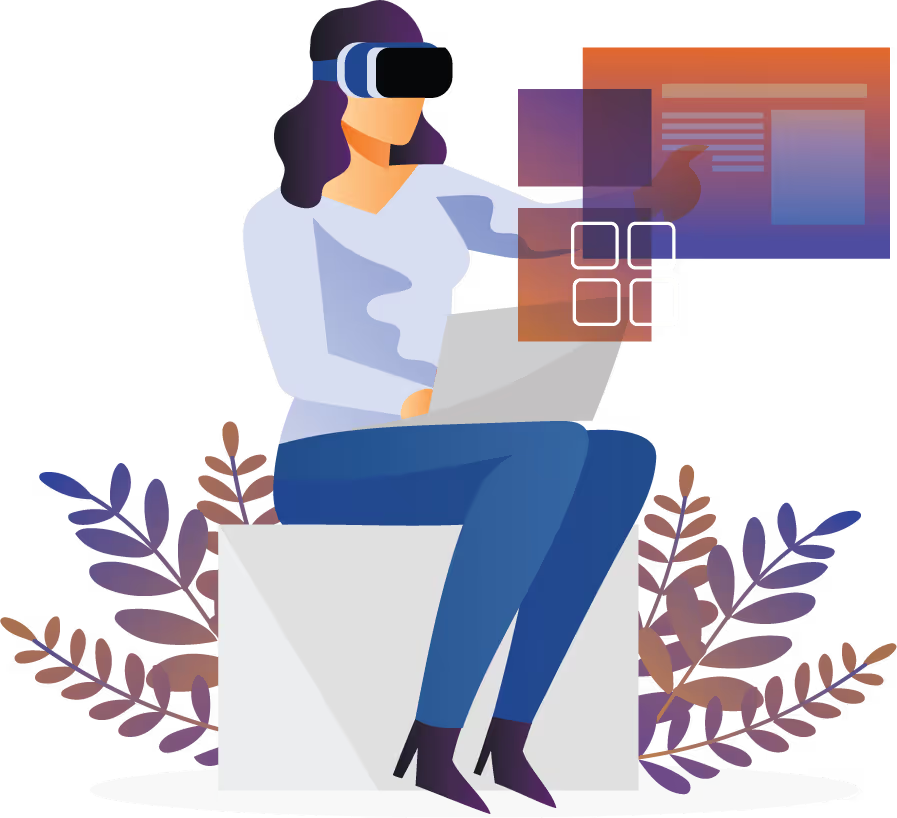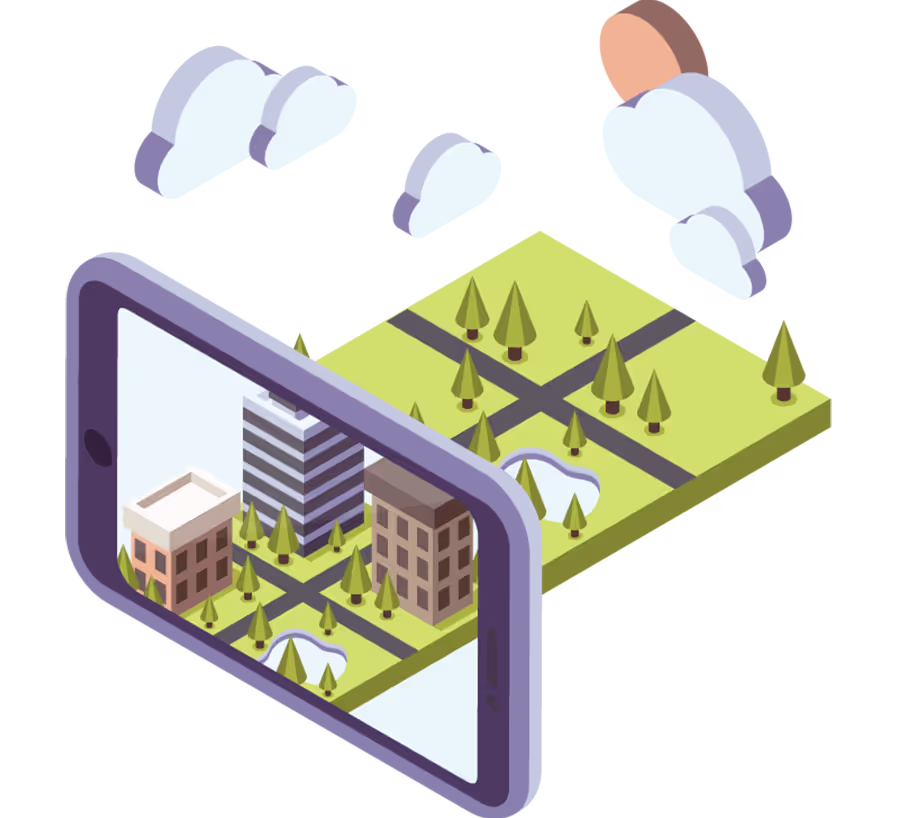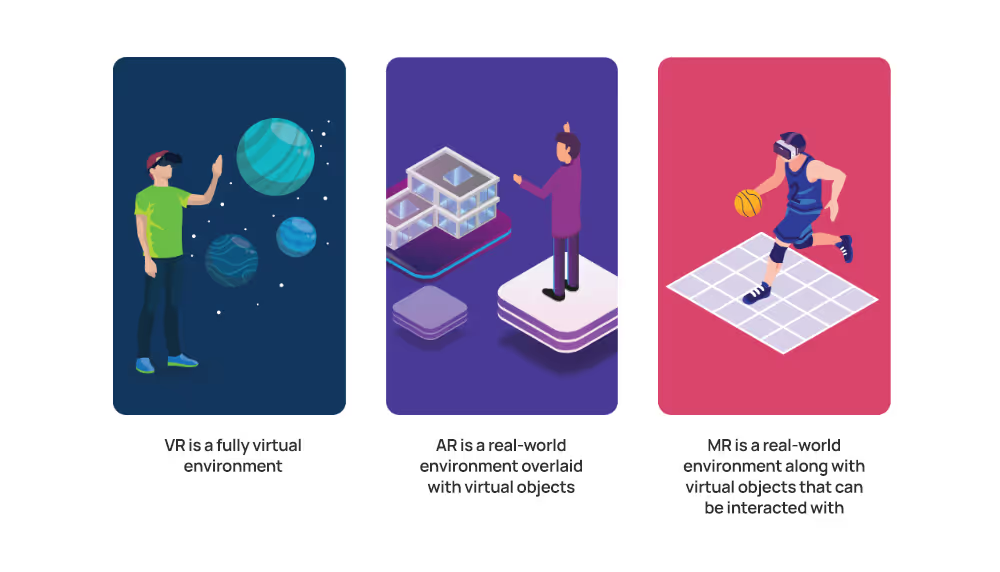
Given the critical nature of their operations, many industries can use Virtual, Augmented and Mixed Reality technologies to conduct various activities in a safe and immersive environment. They can be used in industries like power generation and distribution, oil and gas, manufacturing, retail, healthcare, mining, construction and many others. These technologies are transforming the way people work and interact with customers, colleagues and the world. With enormous potentials, these technologies are only in the initial stages of unlocking.

What Is Virtual Reality?
Virtual Reality (VR) is a technology that replicates an environment (real or imagined) and simulates a user’s physical presence in that environment. It relies on VR devices that artificially create an immersive sensory experience using graphics, sounds and even tactile feedback.
Using VR devices such as HTC Vive, Oculus Rift or Google Cardboard, users can be transported into a simulated real-world or even imagined environments such as in the middle of a squawking penguin colony or even on the back of a dragon. The leading headset, Microsoft HoloLens, engages people with virtual experiences that can incorporate visual, sound, acceleration, and balance elements. VR finds relevance across utilities and various industries as a training tool. Being an immersive experience, one can re-create the similar physical world without the real physical assets and ensure the right training to the personnel is imparted. The early use of VR in the industry was for operator training simulators (OTS).

What Is Augmented Reality?
Augmented Reality (AR) is a technology that enriches visual view of the real-world environment by overlaying real-time digital information. For example, most field engineers who are responsible for maintenance and operations of machines do not have real-time information about the performance and operations of the machines in front of them. With AR informative graphics, real time information can appear in their field of view through AR applications. This capability can add immense value by providing real-time, accurate information, thereby improving efficiencies and downtime. Augmented Reality (AR) can be used in the form of a display of real-time data layered on a live video.

What Is Mixed Reality?
Mixed Reality (MR) is the merging of real and virtual worlds to produce new environments and visualizations where physical and digital objects co-exist and interact in real-time. It means placing new imagery within a real space in such a way that the new imagery is able to interact, to an extent, with what is real in the physical world we know.
The key characteristic of MR is that the synthetic content and the real-world content are able to react to each other in real-time. A user can navigate this environment and interact with both real and virtual objects. Like AR, it overlays digital display images and information onto a real-world environment. Like VR, users can manipulate digital objects in the physical environment. Microsoft’s HoloLens is one of the most notable early mixed reality apparatuses that produce spectator view for Mixed Reality experience combining elements of both AR and VR.
The prime distinctive factors between VR, AR and MR

The Scope Of Use
The use of VR, AR and MR in a power utility has the potential to minimise operational costs, improve safety, improve skill through training, improvising failsafe operations & maintenance through remote expert’s guidance, faster decision making process and broaden the scope of customer services by reshaping the processes through integration with immersive environment. The new generation VR, AR and MR technologies provide greater flexibility and cost arbitrage. These tools if available at the plant site or the field site can bring about a collaborative work environment between field engineers & control centre.
Challenges in the Power Sector and Other Industries that can be addressed with AR, VR and MR
- Safety of workers and equipment is a constant challenge and a top priority area
- Fast skill development of the operating personnel is necessary to cope with today’s changing dynamics
- Hands-on experience is of prime importance and in case of an emergency might not be available immediately
- Inability or difficulty to access certain functions in the physical world might be a challenge
Use cases in CESC
1. Fast skill development of the operating personnel is necessary to cope with today’s changing dynamics
Moving towards innovative solutions in line with its digital transformation strategy, the Distribution Technical division of CESC has been one of the early adopters of VR, AR and MR in the power industry. Through prototyping in their New Cossipore and Park Circus substations in Kolkata, CESC has tried to overcome problems in its T&D network like getting prompt information regarding incipient problems in the live power equipment and resolving it with minimum or no interruptions and thus enhance the operational efficiencies. A team of young engineers has been engaged for further studies, conceptualisation and development of the process to polish up the models before scaling up the deployment in the system.
2. 360° view for faster and safer immersive training sessions
Moving towards innovative solutions in line with its digital transformation strategy, the Distribution Technical division of CESC has been one of the early adopters of VR, AR and MR in the power industry. Through prototyping in their New Cossipore and Park Circus substations in Kolkata, CESC has tried to overcome problems in its T&D network like getting prompt information regarding incipient problems in the live power equipment and resolving it with minimum or no interruptions and thus enhance the operational efficiencies. A team of young engineers has been engaged for further studies, conceptualisation and development of the process to polish up the models before scaling up the deployment in the system.
3. Accessing live information through AR mobile applications
CESC has developed a mobile app that allows scanning of the protective device to show relevant information like live data, fault records etc. without having to access the device physically. It helps junior engineers to get trained about the operations of the relay by collecting live information by virtually interacting with it.
4. Accessing live information through AR mobile applications
Mixed reality (MR) combines aspects of virtual reality (VR) and augmented reality (AR). For example, whether at home, office or any other location, wearing the HoloLens can block the reality and take the user to CESC’s New Cossipore Substation virtually using a pre-recorded and pre-loaded 3D video, with no relation to what is actually happening there real-time. AR adds the ability to access the real-time data of the protective devices in the substation from the cloud through a built-in wireless communication network within the HoloLens. MR provides the ability to view the protective.devices located in the substation, on a virtual screen which allows interaction with the field devices to get live data like current, fault waveform etc. for analysis and troubleshooting from a remote location.
With the help of these immersive applications, experts in CESC are now capable of gaining access to live situations, through safer and more efficient inspection and operational methods. They can collect the required data virtually without visiting the actual sites and extend help towards troubleshooting from any remote location. The success of a fault exploration process heavily depends on accurate interpretation of the available information. The virtual platforms facilitate additional insights by providing an immersive environment to visualise and interpret.
The Need for Digital Twin
With the growth of immersive technologies such as VR, AR, MR and other related domains such as IoT, Artificial Intelligence (AI), Machine Learning (ML) etc. in the recent years, CESC has now embarked upon the ‘Digital Twin’ technology that merges the digital and physical worlds through an immersive experience. This can help in accurate prediction of the current and future state of the physical assets by analysing their digital counterparts (simulating the physical asset by receiving the present configuration data, real-time photographs, videos etc. from the backend server through IoT or other digital means and analysing these using AI, ML etc. in conjunction with VR/MR/AR) without interfering with the actual operations of the physical assets. This can lead to cost-savings, reduction in outages and boosting the reliability of infrastructure, operations, training and customer services. The other key aspect to a digital twin is the usage of the right software to analyse and visualise data, which allows operators to manipulate digital asset conditions for scenario planning.
Imagine an engineer entering a substation virtually to track fault-related information. At the click of a button he reaches the location, opens the doors, climbs up the staircase and explores the place as if he is physically present there. He connects to the device virtually and gets real-time data like the live current, voltage and so on. Augmented with real-time information about the substation, he investigates the fault by viewing the fault analyser, gets the disturbance record data on the mobile and works on restoration. CESC plans to explore such Digital Twin technology for achieving a remotely-operated holistic environment, necessary to maintain a substation.
More areas where VR, AR and MR can be used
Given the ongoing global pandemic situation and restrictions on travel and face-to-face interactions, these kinds of remote yet precise technologies can prove to be a boon in such challenging times. They can help to create a virtual environment of a mine or a city and allows users to walk through these environments and perform what-if scenarios.
As many companies in the service and manufacturing sectors are beginning to realise the benefits of using these to bring about improvement in operational efficiency, processes and customer service, technologies like VR, AR and MR will become more prevalent.
Some of the sectors in which these immersive technologies can be used:
1. E-commerce and Retail
Augmented reality app development is about to reshape on and off-line shopping. AR apps let shoppers interact with products and help in creating personalised shopping experiences. The shoppers will see not only the prices, special offers or discounts but also the features and any additional details that they wish to know about a product (e.g. enabling consumers to see how furniture would look and fit into their interior – without leaving home). In the post-COVID world, the number of online shoppers wishing to do that, or to try on clothes without putting them on, and so on, will be increasing. This kind of solution will lead to faster buying decisions, decreased purchase returns, and higher customer satisfaction. Big companies are even introducing VR payment systems where virtual shoppers can pay for items without stopping the VR experience.
2. Interior Design and Landscaping
Through these technologies, blueprints and images can be brought to life to see how their application might actually look. An AR app can help with landscaping. VR can offer a helping hand at creating plans for any construction. It also aids in presenting a design concept in a favourable light and visualizing the relevant data.
3. Project
AR can help in experiencing projects differently. AR lets showcase projects before they have been built or turn 2D blueprints into interactive 3D visualizations. VR can minimize the time and effort needed to travel and view a project. Exploring 3D plans through VR can bridge the gap between an architect’s or designer’s imagination and the real world.
4. Education and Training
AR technology makes schooling more interactive, engaging, and efficient. For instance, with AR applications, students can observe a 3D galaxy on their tablets or witness an extinct animal come to life. VR will help students to see scientific breakthroughs from the scientists’ perspective or even make the discoveries in a virtual lab themselves.
VR training simulators are used in energy, medical, and manufacturing industries, as well as by professional sportspersons. VR-assisted solutions reduce costs and boost training retention and performance. They also enable students to interact in a new way with other students and with educators in virtual classes.
5. Healthcare
AR apps are already used in Healthcare for a variety of tasks, from helping patients to identify their symptoms to enabling surgeons to peer inside a patient’s body without making large incisions. Ultra high-definition 4K displays and video gaming technology are paving the way for utilising virtual reality in hospitals. A combination of VR, gaming software, and medical imaging procedures already offer simulation capabilities and detailed organ maps. Surgeons will be able to plan ahead and avoid previously unforeseeable issues. That will also minimise invasive procedures, reduce complications for the patients, and promote faster recoveries.
6. Communication and Collaboration
Visualisation is essential for projects in any industry. AR provides an excellent tool for showcasing data by placing it in a visual context and bringing it to life. VR enables people to attend conferences or shows virtually and brings live events to those who couldn’t participate otherwise. When it comes to international partnerships, VR, AR and MR also help to remove the barriers. The technologies can assist with translations or creating a common space.
7. Manufacturing and Occupational Safety
AR technology can facilitate and accelerate processes at factories. AR enables engineers to demonstrate prototypes, construction sites, etc., and share their vision. Digital maps and plans save time and promote understanding. AR glasses can give manufacturing and field workers real-time data that help to reduce errors and improve accuracy, safety, and quality.
Virtual reality mimics real-life scenarios minus the risk. Therefore, it is becoming a standard training tool for employees who have to deal with physical danger. Mining companies can use VR to train employees safely without sending them to the actual site.
8. Advertising & Marketing
Creative use of AR can strengthen customer relationships while increasing the propensity to purchase. Delightful content motivates customers to use a brand’s mobile application regularly. Unique and fresh AR experiences offer a chance to surprise customers and competitors that don’t do anything like that yet. An AR app can turn a shopping mall into an amusement park, where kids and adults interact with virtual characters, play games, win prizes, and will come back for more. A virtual experience grabs 100% of the user’s attention, which means advertisers can pitch their message precisely.
9. Sports
VR apps that make players use their whole body can be designed to help them keep fit or even lose weight. With AR, sports fans and experts can get valuable info, like the trajectory of the ball and its speed, right at the stadium in real time. 360-degree video approach and VR capabilities can take live broadcasting of sports events to a new level, providing an exciting and immersive experience.
Flipside Of VR, AR And MR Implementation
The implementation of any technology across the operations involves a capital investment, which may not be feasible for every business house. Also, the initial phases of setting up – collating comprehensive operational data, photographing extensively for VR imaging, maintenance of resources including hardware, software and databases and so on. It can be a time-consuming and daunting task to begin with.
Takeaway
These are only a few examples of areas that can be revolutionised by virtual, augmented or mixed reality. These immersive technologies are already transforming the way people work and interact with customers, colleagues and the world. They have enormous potentials that are only in the initial stages of unlocking. It is clear that today’s VR/AR/MR applications – and those going forward – will continue this trend. However, a judicious decision needs to be taken considering factors like cost, standardisations, interoperability, market dynamics etc. before deployment into the system.
The Digital Twin concept is the next big thing in most of the business sectors, which helps in accurately predicting the current state and future of physical assets by analysing their digital counterparts. Enterprises will be using data from Digital Twins of IoT-connected products to improve innovation and organisational efficiency, achieving productivity gains.
For more information on NPCL Saathi, or for any assistance in AI chat bot implementation, please get in touch with:
Santanu Sen,
DGM – Planning,
CESC
E: santanu.sen@rpsg.in
M: +91 99030 10750
To view some more interesting VR applications, click on the following links. You can get the contact details of the agencies who have created these, by visiting their website links given below.
1. Digital Jalebi
2. Ink in caps









